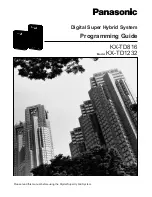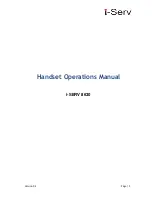
-24-
11) Turn both discharge and suction valves in the back positions.
12)Disconnect the manifold.
10. Pressure, Superheat and Subcooling Readings
CAUTION
To read properly, the service valves must be in the middle
positions.
Complai
nt
Possible Causes
1) High suction pressure and low
head pressure
Zero superheat and zero subcooling
2) High suction pressure and low
head pressure
Low superheat and low subcooling
3) High suction pressure and high
head pressure
Low superheat and high subcooling
4) High to normal suction pressure and
high head pressure
Low subcooling
5) High suction pressure and high
head pressure
Low superheat and low subcooling
6) High suction pressure and high
head pressure
High superheat
7) Low suction pressure and low
head pressure
High superheat and low subcooling
8) Low suction pressure and low to normal
head pressure
High superheat and high subcooling
9) Low suction pressure and low
head pressure
Normal to
high superheat
and
low subcooling
10) Low suction pressure and low
head pressure
Low superheat and low subcooling
11) Low suction pressure and low to normal
head pressure
High superheat and normal to
high subcooling
12) Low suction pressure and normal head
pressure
1) Compressor may be bad
2) Expansion valve opened,
too much oil
3) Overcharge
4) Non-condensable gas
5) Water
restricted,
bad
water regulator or dirty
condenser
6) High cellar temperature,
high evaporator load
7) Undercharge
8) Liquid line restricted after
receiver, solenoid valve
restricted
9) Suction line restricted
10) Air restricted at
evaporator, evaporator
iced
11) Evaporator restricted
12) Expansion valve restricted






































